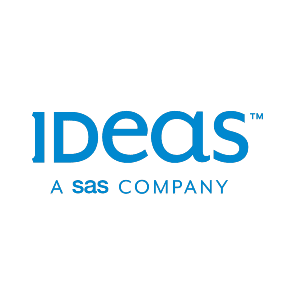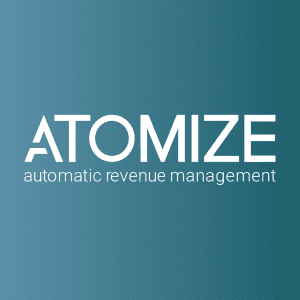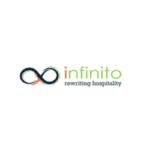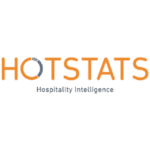 Effective hotel management relies on accurate, consistent data to identify promotional needs, plan campaigns and guide pricing and inventory decisions. However, given that the only real certainty over the past year has been uncertainty, some hotels are no longer willing to rely on traditional data sources to build long-term annualised budgets, instead opting to forecast on a monthly basis instead.
Effective hotel management relies on accurate, consistent data to identify promotional needs, plan campaigns and guide pricing and inventory decisions. However, given that the only real certainty over the past year has been uncertainty, some hotels are no longer willing to rely on traditional data sources to build long-term annualised budgets, instead opting to forecast on a monthly basis instead.
Hotels are hungry for more data to better predict future revenue performance, but information sources have been severely disrupted due to the impact of COVID-19. So, what should hoteliers do when they begin to doubt the data sources they have previously based key planning and decision-making around?
Not all data is created equal
Forecasting with any degree of certainty at present is problematic. However, revenue management professionals should be able to build out a range of forecasts based on all credible external and internal market intelligence that can be gathered, such as government announcements, travel policies and market reports. Revenue managers should build their forecasts based on several scenarios (optimistic, most likely, and pessimistic) and review the actual demand versus forecasted results regularly to adjust long-term pricing strategies.
Predictive modelling and forecast data remain essential for hoteliers planning for the future. It is important to note though, that it is not just about having access to more data in these circumstances but looking at the right data. Not all data is created equal and only the relevant information should be considered. To build an accurate vision for the future, hotels must gather macro-level intelligence such as border and travel restriction policies and how they impact on market trends and travel intent, along with generate granular-level data, focusing on the transaction level, aggregating, and benchmarking rate category, channel, cost of acquisition, arrival and departure dates, lead time, length of stay, loyalty contribution—even at the individual travel agency or corporate account level.
Consider data from international markets to identify forward trends
Booking data from the 2020 European summer market highlighted a rise in micro-travel amongst guests. Markets like Germany showed demand returned quickly for leisure travel with a large segment of travellers booking in locations close by, often within a three-to-four-hour drive of their primary place of residence. Accommodation providers in North America saw strong interest from guests for their summer period—in particular, for properties outside major metropolitan areas.
This correlated with the travel trends seen by many markets across the APAC region some six months later, where markets with strong pre-existing leisure demand, such as India, outperformed destinations that rely on international tourists, like Thailand or Singapore. Overall, traditional city-based hotel properties had weaker performance compared with self-contained serviced apartments and resorts based outside of city centres.
The trend towards short breaks outside of cities has been evident in Australia, where operators of caravan and holiday parks, along with eco-lodges or boutique properties in rural areas, smaller towns, or those based on the coast, experienced a growth in bookings from local travellers compared to major urban based hotels. So, while no two markets are identical, macro-travel trends can be picked up from international data sources to help predict future local demand sources.
Focus on guest data for promotion relevancy
The pandemic has reinforced the value of collecting guest data and having well-defined market segments. Reassessing your market segments in conjunction with understanding guest personas associated with the new travel behaviours will support accurate demand forecasts and tailored promotions.
A quick way of creating new guest personas and improving your guest data in this market is to collect geographic source data by state, city and preferably postcode—which has become of greater significance with the influx of travel by car. Collecting this information over the busier summer periods will provide valuable data and help create new guest personas to development of demand strategies and tactical marketing campaigns in autumn and winter that traditionally attract lower demand from the leisure market.
Going forward, hoteliers should target promotions based on behavioural patterns and needs. Non-price factors and data, such as distance, rating and relevance are becoming more important in the decision-making process for potential guests, resulting in the relevance of ‘value for money’ declining. This provides the opportunity to adjust pricing strategies through day-of-week occupancy optimisation and offering value-added promotions and packages. Greater levels of guest data, together with the change in travellers’ needs and behaviours, will help to create promotions that are relevant, genuine and resonate with the targeted customers to stimulate demand.
Trust your revenue manager—and your RMS
Revenue managers are instrumental in finding new or alternative revenue sources in times of uncertainty and operate best when supported by an advanced automated revenue management system (RMS). An RMS helps a hotel to price competitively under any circumstance, providing management with key data, predictive analytics, group management, online reputation data, remote accessibility, and support to deliver the most optimal decisions.
While RevPAR indices and ADR will take time to recover, the best opportunity to generate revenue efficiently is to ensure a hotel has accurate data to build effective campaigns that capture the right business at the right price. Hoteliers should empower revenue and marketing teams with automated solutions so they can focus on strategic initiatives to drive demand. For example, data and analysis generated by an RMS of post-booking and arrival upsell activities can provide insights for future promotional activities to secure greater levels of guest spend. And ahead of implementing new promotions, hotels can simulate what-if analysis and run A/B testing on potential pricing scenarios with their RMS, so they aren’t blindly launching new campaigns at critical times for their business.
Share data across departments to drive profit optimisation
Hotel operations use forecast data to anticipate business flows, manage resources and control costs. And management companies and owners use similar data to anticipate profits and guide planning, financial and investment decisions. To optimise revenue and profits in a disrupted market, the forecast and guest-spend data compiled by revenue managers should be accessible across all commercial areas of a hotel organisation.
From a marketing perspective, revenue management data can help identify those who have the greatest value to the hotel. Analysis should look beyond room spend to understand their total value through purchases of food and beverage, plus ancillary items like spa, golf and retail. These insights can then be used to create targeted, personalised campaigns to entice them back, or attract more travellers like them and increase total spend and hotel performance.
Sales prospecting, proposals and contract negotiations from any segment should be oriented towards maximising total hotel revenue rather than simply filling guest rooms. Whether it’s group bookings, corporate agreements or wholesale contracts, the goal should be to better optimise all spaces throughout the hotel, including meeting rooms and ancillary revenues. It is essential for sales teams to work with revenue managers to analyse data and consider the costs of displacement. Identifying opportunities to boost revenues from non-room areas by understanding total-guest-value data and growth potential in the future.
As with other departments, food and beverage can also benefit from access to revenue management data and strategies normally applied to rooms. This includes demand pricing, menu engineering and precise forecasting to identify promotional needs and find opportunities to reduce labour expenses, cost of goods sold, and spoilage.
Use accurate data to drive future demand
While the recovery pattern from COVID-19 will vary for each hotel depending on location and business mix, it is critical hoteliers have access to the right data and automated systems that support the development of agile, adaptable, and sustainable recovery plans. Just collating more data from more sources in the hope of building an accurate vision for the future won’t work. It is the hotel with the most accurate data, not the greatest amount of data, that has the upper hand in planning future promotions and driving demand.































